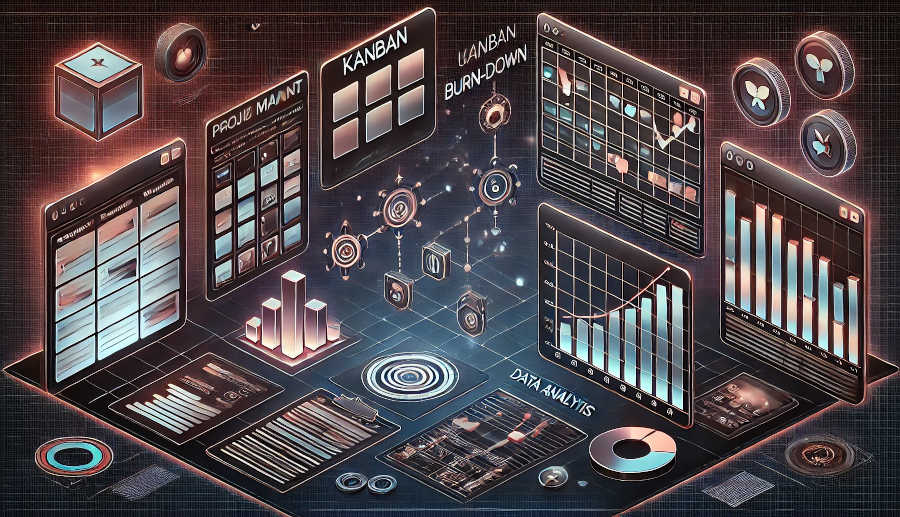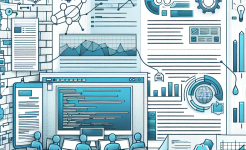Agile development has revolutionized the software development landscape, emphasizing flexibility, collaboration, and rapid delivery. At the heart of this approach lies the concept of iterative and incremental development. The burndown chart, a visual tool, plays a crucial role in this process. It provides a clear picture of the remaining work over time, enabling teams to track progress, identify potential issues, and make informed decisions.
The burndown chart typically plots the amount of work remaining on the vertical axis and time on the horizontal axis. As the project progresses, the line representing the remaining work should slope downwards, indicating that tasks are being completed. This visual representation helps team members, stakeholders, and managers understand the project's status at a glance. It serves as a communication tool, fostering transparency and accountability within the team.
In agile development, the focus is on delivering value in short cycles, known as sprints. The burndown chart is closely tied to these sprints. It allows teams to plan their work for each sprint, estimate the effort required, and then track how well they are meeting those estimates. By regularly updating the chart, teams can adapt their plans as needed, ensuring that they stay on track to deliver the desired functionality.
Understanding the Scrum Process
The Scrum process is a popular framework within agile development. It provides a structured approach to managing projects, with defined roles, events, and artifacts. The three main roles in Scrum are the Product Owner, the Scrum Master, and the Development Team. The Product Owner is responsible for defining the product backlog, a prioritized list of features and requirements. The Scrum Master facilitates the Scrum process, removing any obstacles that the team may face. The Development Team is responsible for delivering the product increments.
Scrum has several key events, including Sprint Planning, Daily Scrums, Sprint Review, and Sprint Retrospective. During Sprint Planning, the team selects items from the product backlog to work on during the upcoming sprint. The Daily Scrum is a short, daily meeting where team members share their progress, discuss any issues, and plan their work for the day. The Sprint Review is a meeting at the end of the sprint where the team presents the work completed during the sprint to the Product Owner and other stakeholders. The Sprint Retrospective is an opportunity for the team to reflect on the sprint, identify what went well and what could be improved, and make plans for the next sprint.
The artifacts in Scrum include the product backlog, the sprint backlog, and the increment. The product backlog is the high-level list of features and requirements. The sprint backlog is the subset of the product backlog that the team has committed to completing during a particular sprint. The increment is the potentially shippable product that the team has created at the end of each sprint.
Connecting Burndown Chart to the Scrum Process
The burndown chart fits seamlessly into the Scrum process, enhancing its effectiveness. At the start of a sprint, the team uses the burndown chart to plan their work. They estimate the effort required for each item in the sprint backlog and plot the total amount of work on the chart. This provides a baseline from which they can track their progress.
During the sprint, the team updates the burndown chart daily, usually during the Daily Scrum. They record the amount of work completed and adjust the remaining work accordingly. This allows them to see if they are on track to meet their sprint goals. If the line on the burndown chart is not sloping down as expected, it indicates that there may be issues, such as tasks taking longer than expected or unforeseen obstacles. The team can then investigate and take corrective action.
At the end of the sprint, the burndown chart provides valuable insights during the Sprint Review and Sprint Retrospective. In the Sprint Review, it shows how well the team met their sprint goals. In the Sprint Retrospective, the team can analyze the burndown chart to identify trends and patterns. For example, they may notice that they consistently underestimated the effort required for certain types of tasks. This information can be used to improve future sprint planning and estimation.

Benefits of Using Burndown Chart in Scrum
One of the main benefits of using a burndown chart in the Scrum process is improved visibility. It provides a clear and concise view of the project's progress, making it easier for stakeholders to understand how the project is going. This transparency helps build trust and confidence in the team's ability to deliver.
Another benefit is better planning and estimation. By regularly updating the burndown chart, the team can learn from their past experiences and improve their estimation skills. They can also identify potential risks and issues early on, allowing them to take proactive measures to mitigate them.
The burndown chart also promotes teamwork and collaboration. Since the entire team is involved in updating the chart and analyzing the data, it encourages communication and shared responsibility. Team members can see how their individual efforts contribute to the overall progress of the sprint, fostering a sense of unity and purpose.
Challenges and Solutions in Implementing Burndown Chart in Scrum
Implementing a burndown chart in the Scrum process is not without challenges. One common issue is inaccurate estimation. If the team underestimates the effort required for tasks, the burndown chart may give a false sense of progress. To address this, the team can use techniques such as relative sizing and historical data to improve their estimation accuracy.
Another challenge is maintaining the chart. In a fast-paced development environment, it can be easy for the team to forget to update the burndown chart regularly. To overcome this, the Scrum Master can enforce the practice of updating the chart during the Daily Scrum. Automated tools can also be used to simplify the process of updating the chart.
Finally, there may be resistance from team members who are not familiar with the burndown chart or who see it as an additional burden. To address this, the Scrum Master can provide training and education on the benefits of using the burndown chart. They can also involve the team in customizing the chart to meet their specific needs, making it more relevant and useful.
Conclusion
In conclusion, the burndown chart is an invaluable tool in agile development, especially when integrated with the Scrum process. It provides a visual representation of the remaining work, enabling teams to track progress, plan effectively, and communicate transparently. By connecting the burndown chart to the various aspects of the Scrum process, teams can enhance their productivity, improve their estimation skills, and deliver high-quality products more efficiently.
Despite the challenges that may arise in implementing the burndown chart, with proper training, communication, and a commitment to best practices, these issues can be overcome. The benefits of using the burndown chart, such as improved visibility, better planning, and enhanced teamwork, far outweigh the potential difficulties.
As the software development industry continues to evolve, the importance of agile methodologies and tools like the burndown chart will only increase. Teams that embrace these concepts and effectively integrate them into their development processes will be better positioned to succeed in a competitive marketplace. By leveraging the power of the burndown chart in the Scrum process, teams can achieve greater efficiency, higher quality, and more satisfied customers.
ARTICLE TITLE :Burndown chart and agile development: How to seamlessly connect to Scrum process ,AUTHOR :ITpmlib

















